Floating Farms and Water Bodies
Mohammad Shahadat Hossain travelled to the remarkable floating gardens in Barishal, Bangladesh. This historic farming system might be one of the best adaptation techniques in agriculture in flood-prone areas.
Gagan is a small village in Pirojpur district of southern Bangladesh. Innumerable rivers and canals crisscross the area. Most of the villagers are farmers and their lives are closely connected to these water bodies.
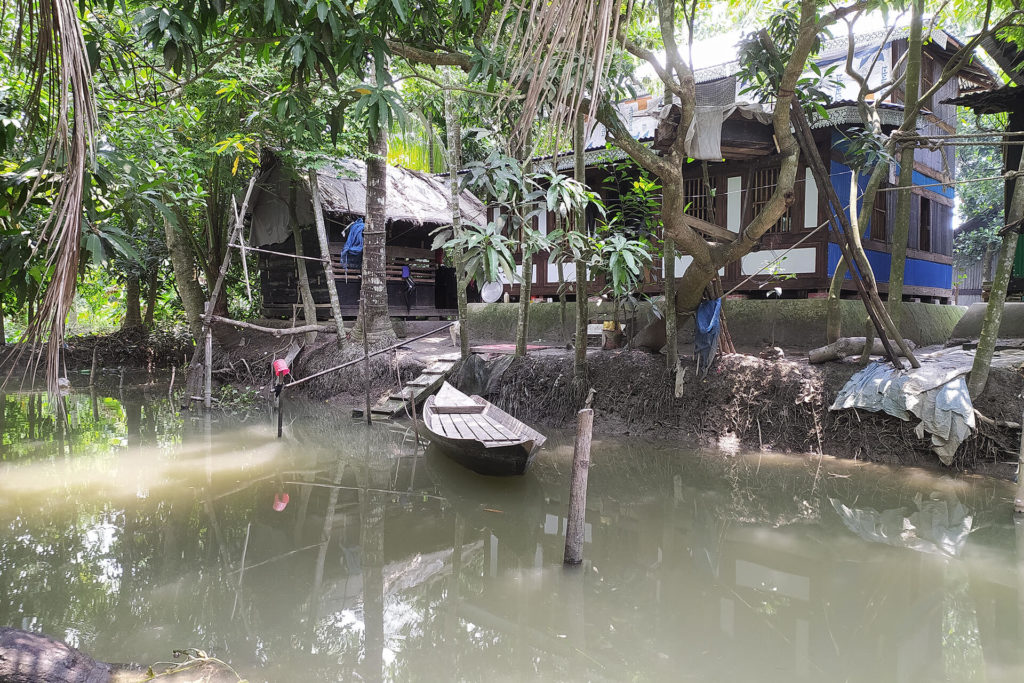
But the water is not always a blessing for them. They face extreme hardships when it rains too much. As the water level rises, so do the worry lines on their foreheads. Sometimes, they have to live with flood water inside their homes. The longer the water stays, the more damage it does. Often, they have to rebuild their houses or leave their village to look for new livelihoods.
But with time the villagers are learning to adapt to life that centers around water. Today, they dream of a future in the land of their ancestors. The proverb “necessity is the mother of invention” is a reality here. Some people have survived for generations through their own ingenuity in the low-lying areas of Bangladesh.
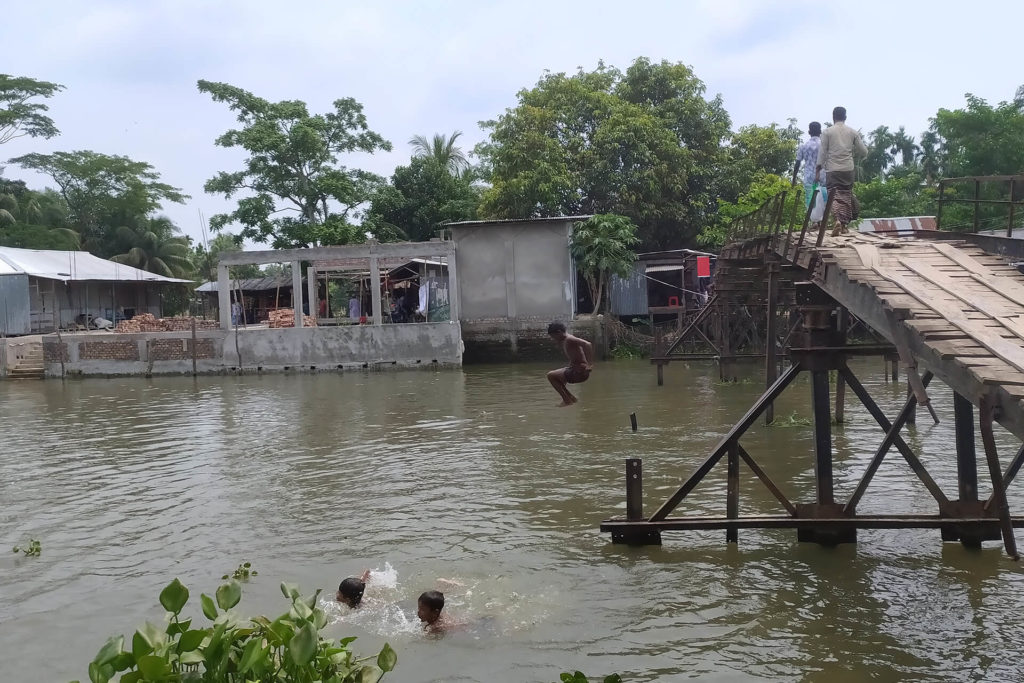
Water is not always a blessing
Over time, they have come up with new innovations and methods that not only provide food security but also create employment for many people. One of the most innovative approaches is floating agriculture. In areas where the land is under water for six to eight months of the year, farmers prefer to cultivate using this floating method.
Floating farms
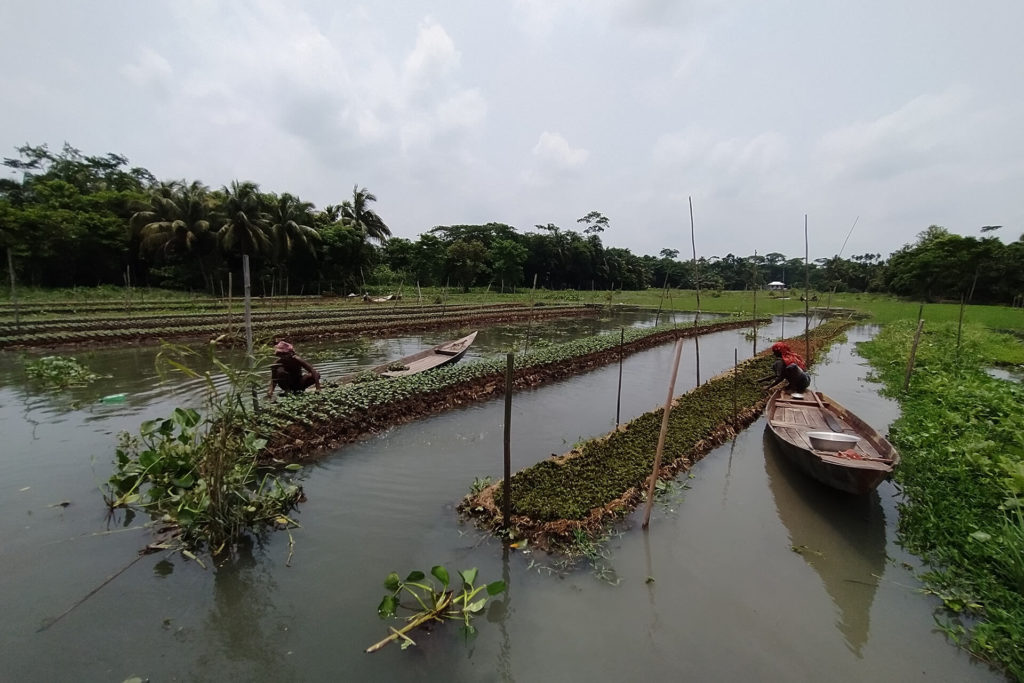
Floating farms are popular in Barishal, Gopalganj, Pirojpur, and Satkhira. In the submerged lowlands during the monsoon season, water hyacinths and other aquatic plants grow in abundance and local farmers use these as floating beds to grow a variety of vegetables and produce seedlings.
Farmer Monir Hossain cultivates paddies for three months in the dry season and grows vegetables on floating farms for the rest of the year. For a long time, his forefathers have been practicing floating agriculture. Following in their footsteps, he specializes in floating farms and has successfully engaged in the profession for over a decade.
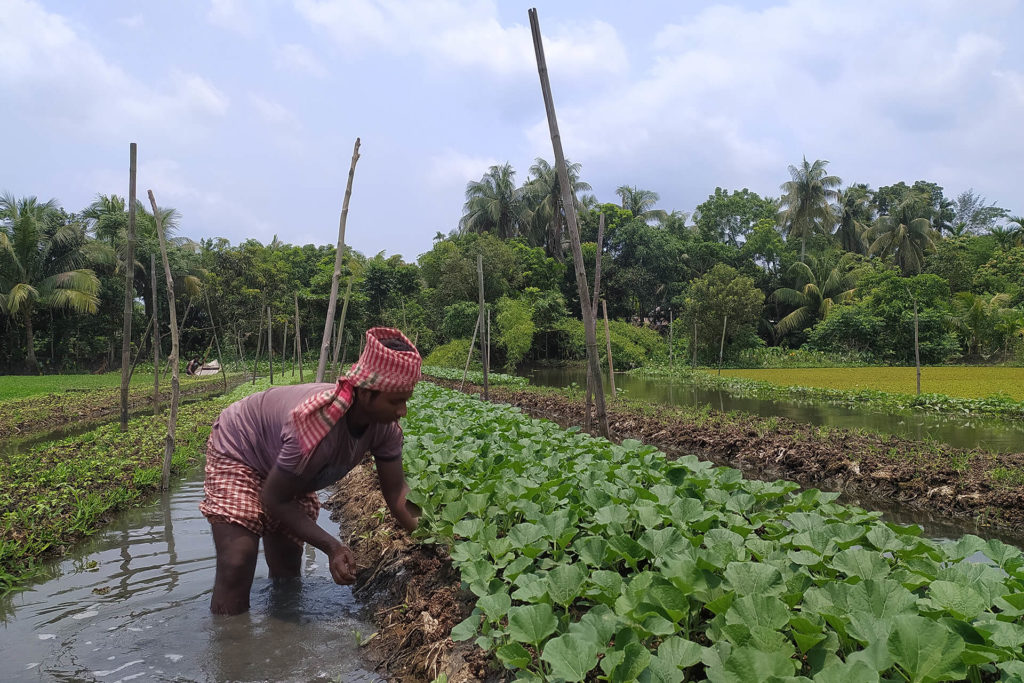
Ancient technology
Talking about floating farms, Hossain said, “our ancestors have been cultivating in this way. This farming method is about 200 years old. Floating agriculture is becoming more and more popular these days. Some people, who had once migrated to the cities in search of jobs, have now returned to the village and are making a living through floating farms.”
The village women make small seed pots with sonali lata, a kind of aquatic plant. When there is no work in the field, the men help the women in this work. After the seeds germinate, they transplant the pots on to the floating beds where the seedlings grow and are ready for sale within 10 to 15 days. The farmers also cultivate seasonal vegetables, herbs, and spices. The floating farm produce includes chilies, garlic, turmeric, and strawberries, as well as vegetables, rice and wheat seedlings.
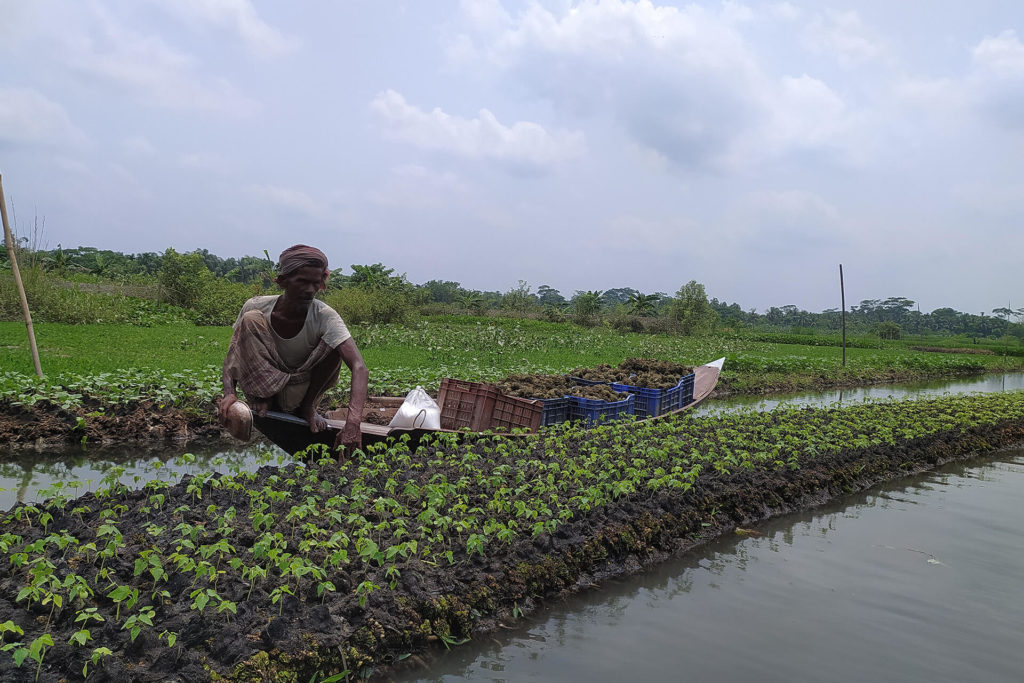
Realizing the importance of these farms, the Bangladesh government has taken various steps to promote floating farms. Marginal farmers receive various types of training and assistance through their local agriculture officer. In addition, insolvent farmers can get loans from private financial institutions which they can repay in monthly instalments.
The government and some local and foreign NGOs have also been working to introduce the system in other parts of the country. The Department of Agricultural Extension (DAE) is doing research and working on expanding and popularizing the floating farm method.
Experts believe that floating farms are one of the best adaptation techniques in agriculture in the flood-prone areas of Bangladesh. Floating farms were recognized as a Globally Important Agricultural Heritage System (GIAHS) in December 2014 by the United Nations’ Food and Agricultural Organisation (FAO).
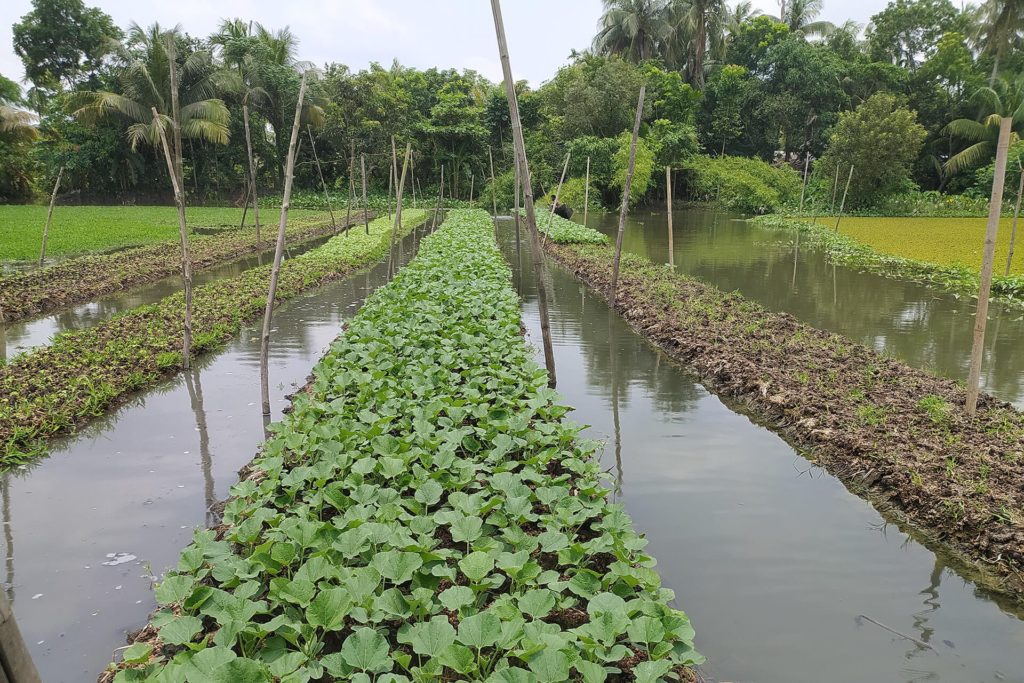
Produce from the floating farms is safe and environment friendly as farmers usually do not use pesticides or chemical fertilizers. In some areas, when the floodwaters subside during the dry season, the floating beds become well-decomposed organic fertilizers for the next crop.
As a result of climate change and global warming, Bangladesh, along with other countries, is struggling more and more as rainfalls increase and sea levels rise. In the future, floating farms may become their mainstream farming method and help mitigate the dramatic changes being seen in the country.